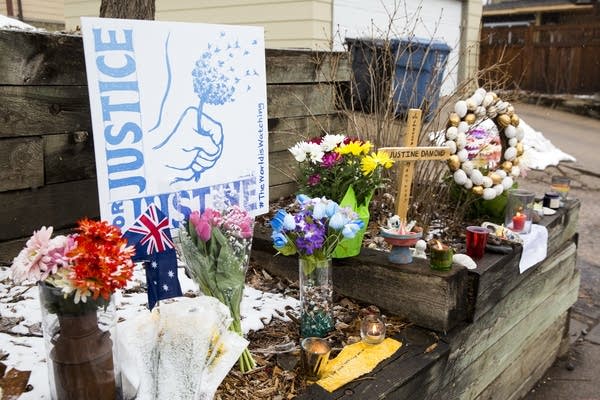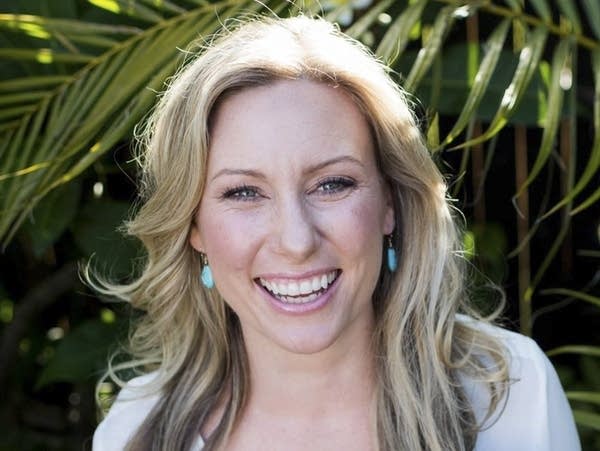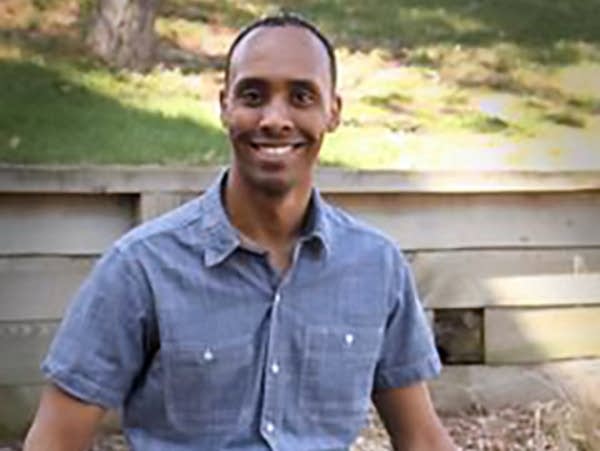A thump, a flash and a shot: What happened the night Justine Ruszczyk was killed

The events that led to charges against former Minneapolis police officer Mohamed Noor unfolded quickly on the night of July 15, 2017.
It was 11:27 p.m. when Justine Ruszczyk called 911 for the first time that night — to report a possible sexual assault outside her Minneapolis home. A woman, she said, sounded distressed.
She waited for a while, about eight minutes. Called the police again. She was concerned the dispatchers had gotten the address wrong.
Then at 11:39 p.m., 12 minutes after that first call to police, Ruszczyk told her fiance, Don Damond, who was away on a business trip and getting updates from her over the phone, "OK, the police are here."
Create a More Connected Minnesota
MPR News is your trusted resource for the news you need. With your support, MPR News brings accessible, courageous journalism and authentic conversation to everyone - free of paywalls and barriers. Your gift makes a difference.
Within two minutes, Ruszczyk was fatally shot, and the officers responding to her 911 call were making a call of their own.
On Tuesday, Hennepin County Attorney Mike Freeman laid out the results of his office's investigation into that night. He charged Noor with third-degree murder and second-degree manslaughter in Ruszczyk's death.
According to the criminal complaint, Noor and his partner, officer Matthew Harrity, had driven their police SUV into the alley between 50th and 51st streets in the Fulton neighborhood of Minneapolis, behind Ruszczyk's house. Harrity was behind the wheel.

Their squad's headlights were turned off and the screen of their laptop was dimmed. Harrity used his spotlight to look for people on his side of the car, where Ruszczyk's house was. His window was rolled all the way down; it had been a hot day.
Harrity wasn't wearing a seatbelt, the complaint said, and he'd removed the safety hood of his gun's holster before turning into the alley. He slowed the car to 2 mph. He heard the sound of a dog in a house, nothing else. They saw no one. Harrity never stopped the car, and neither of the officers got out of the car to investigate.
By the time Harrity and Noor had reached the end of the alley, they determined they'd checked out the complaint and there wasn't any threat. Harrity told investigators that's when he put the safety hood back on his holster.
Noor began typing "Code 4" into the squad car's computer — indicating to dispatch, Freeman said, that they'd "completed their investigation, were safe and needed no assistance."
They were heading to another call.
As they waited at the end of the alley for a bicyclist to cross in front of them, just a few seconds later, Harrity told investigators he heard a voice, and a thump, somewhere behind him on the squad car.
He "caught a glimpse of a person's head and shoulders outside the driver-side door," Freeman said Tuesday.
But Harrity wasn't able to say what the noise was, or how loud it was. He said it sounded muffled, like a whisper. He didn't know whether it was a man or woman, an adult or a child.
"Importantly," Freeman said Tuesday, "he could not see the person's hands and estimated the person was at least two feet away from him."
He saw no weapons. Harrity later told investigators that he'd been startled by the sound. He told them he thought his life was in danger. He took his gun from his holster and held it against his rib cage, pointed downward.

Then he heard another sound — like a light bulb dropping, he said — and saw a flash. He checked to see if he had been shot. He hadn't.
He looked to his right and saw his partner's right arm extended across him toward the open window. He didn't see his partner's gun.
"Officer Harrity then looked out his window and saw a woman," Freeman said.
Justine Ruszczyk had her hands on a gunshot wound on her left side.
"I'm dying," or "I'm dead," she said, according to the complaint.
Once he saw her hands, Harrity said, he no longer believed the woman at the side of his car could be a threat. She was far enough from the driver-side door that Harrity opened it and got out of the car.
Noor got out, too, still carrying his gun. Harrity told him to put it back in his holster. He reported shots fired at 11:40 p.m. — about a minute and a half after Ruszczyk told her fiance she'd seen their car in the alley.
That's about when the two officers turned on their body cameras, according to the complaint. The officers started CPR. More police arrived, then the fire department, and paramedics.
Ruszczyk died of a single gunshot wound at the scene.
Forensic tests later determined the bullet had been fired from Noor's gun.
Harrity's body camera later captured a conversation between him and his supervisor at the scene. He told the sergeant they had been getting ready to leave and go to another call when "she came up on the side out of nowhere."
"We both got spooked," he said.
A couple leaving a party at a house nearby heard the gunshot. The bicyclist that had been passing in front of the squad SUV stopped and recorded some of the aftermath on a cellphone, then left. Noor hasn't spoken to investigators, citing his Fifth Amendment right against self-incrimination.

Freeman said Tuesday in announcing charges that Noor didn't follow his training during the incident. There was no threat present to justify the use of deadly force, he said.
"There is no evidence that officer Noor encountered a threat, appreciated a threat, investigated a threat or confirmed a threat that justified his decision to use deadly force," Freeman said. "Instead, officer Noor recklessly and intentionally fired his handgun from the passenger seat, in disregard for human life."
Freeman came to his decision to charge after eight months of investigation. He convened a grand jury this winter to compel some police officers — who he said weren't cooperating with the investigation — to testify.
Tuesday's charges mark what apears to be the second time a Minnesota police officer has been charged in a shooting death while on duty, and the first time for a Minneapolis officer.
After Freeman announced the charges Tuesday, the Minneapolis Police Department said in a statement that Noor is no longer an officer with the department. Noor is expected to make his first court appearance Wednesday.